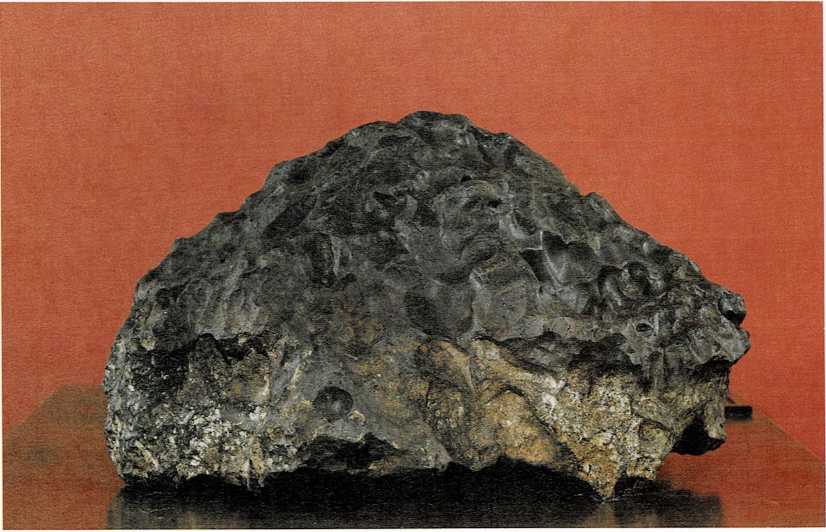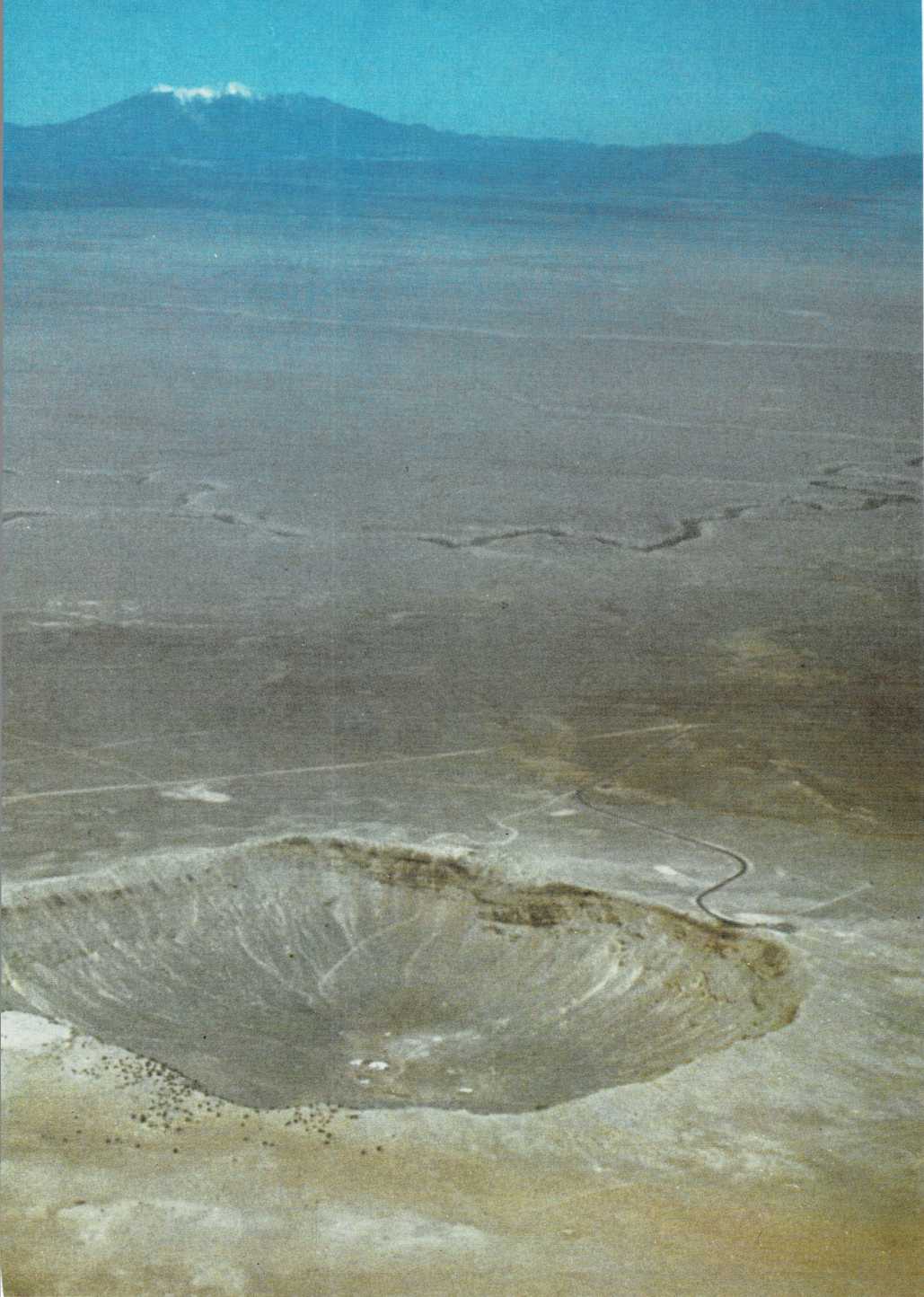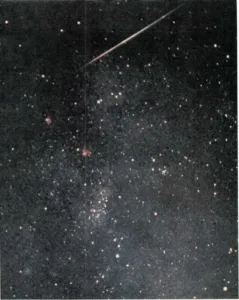“Shooting stars”
A big lump of rock and metal—a meteoroid—rushes through the
blackness of space. For billions of years, ever since the planets were
formed, it has been zipping around and around the sun. But now it is
about to meet its end. The lump of rock is heading straight toward a
huge, blue ball—the earth.
The rocky lump hurtles through space and into the earth’s atmosphere.
Almost at once it begins to glow red-hot. It is traveling at such
tremendous speed that earth’s air is rubbing hard against it. This
friction makes the lump of rock grow hot, just as your hands get warm
when you rub them together.
The rock turns from red-hot to white-hot. Bits of it bum up, leaving a
trail of glowing gas. Seen from the surface of the earth, the burning
rock looks like a bright streak, flashing across the sky. A child looks
up and sees it. “Look, Mother!” the child says. “A shooting star!”
That’s what a “shooting star” or a “falling star” is—a meteoroid from
outer space that comes into earth’s atmosphere and burns up. But when a
meteoroid comes into our atmosphere and burns, we call it a meteor.
As many as 200 million meteors come into earth’s atmosphere every day.
Most of them are quite small, and burn up completely. But if a meteor is
big enough, it may not bum up before it hits the ground. It comes
smashing into the earth, a white-hot lump that slowly cools off. Then we
call it a meteorite—a chunk of metal, or metal mixed with rock, that
has come to earth from outer space.

This meteorite is about four feet (1.2 meters) wide and weighs 3,275
pounds (1,474 kilograms).
Most meteorites burn away until very little is left of them. But some,
that were huge to start with, still weigh many tons. And, several times,
the earth has been struck by enormous meteorites that dug huge craters
several miles (kilometers) wide and hundreds of feet (meters) deep.
Most meteoroids that strike the earth and other planets are probably
pieces of asteroids that have been knocked out of their orbits. Others
are probably parts of comets.

the great Meteor Crater of Arizona
Long ago, a giant meteorite crashed into the earth and made this crater.
The crater is about 4,150 feet (1,265 meters) across and 570 feet (174
meters) deep.


